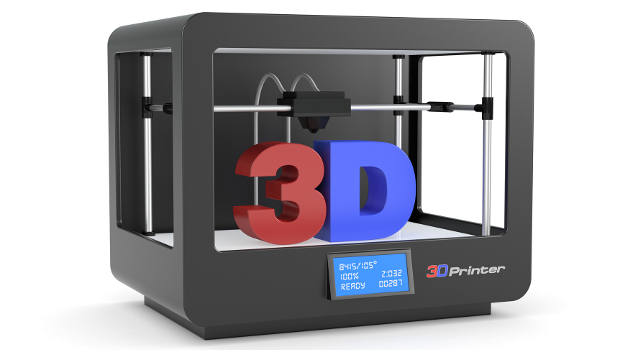For certain industries and for certain applications, there is no doubt that 3D printing is here to stay. When it comes to prototyping specialist engineering projects, printing machine parts in remote locations or creating customised medical prosthetics, it is hard to see this particular genie being put back in the bottle.
3D printing uses technology similar to laser and inkjet printing to deposit layers of material on top of each other to build three dimensional objects from the ground up, one layer at a time. The technology has existed for close to 20 years, but in recent years has become increasingly affordable — it is now possible to purchase a desktop 3D printer for under €1,000.
For enterprises class companies, 3D printing is much more than a curiosity. It frees them from the need to build standardised parts and pursue economies of scale as a matter of course. With 3D printing, the time and cost is the same for a thousand copies of one part, or for printing the same part a thousand times.

The market itself appears small compared to the conventional print market, but when you look at the cost of the technology that currently exists, it’s a lot more expensive. But there are already hints that a number of vertical markets have started to do more than just trial 3D printing. There are enough cases of this happening for us to say that it’s more than just prototyping going on, Gareth Parker, Ricoh UK and Ireland
This has led some industry commentators to describe 3D printing as the most potentially disruptive technology to appear in decades — imagine a world where the supply chain of large companies was not necessarily built around factories set up to make it cheap to produce identical copies of the same objects.
In addition, 3D printing removes the middle man of the production process used to create metal or plastic objects — the need to create moulds. Instead it is possible to go directly from on-screen design to physical object.
But will we ever see 3D technology integrated with conventional print and scan functionality in the average IT-enabled enterprise? It seems likely that the answer is yes, but it will not be anytime soon.
3D spread
“Will every single office around the world have a 3D printer in it? Probably not. Will there be one in a business or a couple around a large organisation? That strikes me as quite likely, and the IT function will need to adapt to support that kind of roll out,” said Gareth Parker, strategic marketing manager for Ricoh UK and Ireland.
Ricoh has manufactured print heads for around 30 years, and is also involved in ongoing research and development of 3D printing technology.
“A lot of organisations are still sitting on the side lines in terms of working out where in their plans 3D printing can help speed up processes, and how the usual business drivers can be applied to it. Can it improve efficiencies and drive down waste? After all, IT has to react to the strategic direction of the business and if that strategy involves 3D printing, then that means adopting a supporting role,” Parker said.
While 3D printed guns have generated most of the media attention around 3D printing, it seems the business world is more concerned about potential losses as a result of intellectual property theft. A 2013 report published by Gartner predicted that by 2018, 3D printing will result in a global loss of at least $100 billion (€733 billion) per year due intellectual property theft. The report stated that the falling costs of 3D printers, scanners and modelling technology, combined with improving capabilities, will make the technology for IP theft more accessible to would-be criminals.







Subscribers 0
Fans 0
Followers 0
Followers